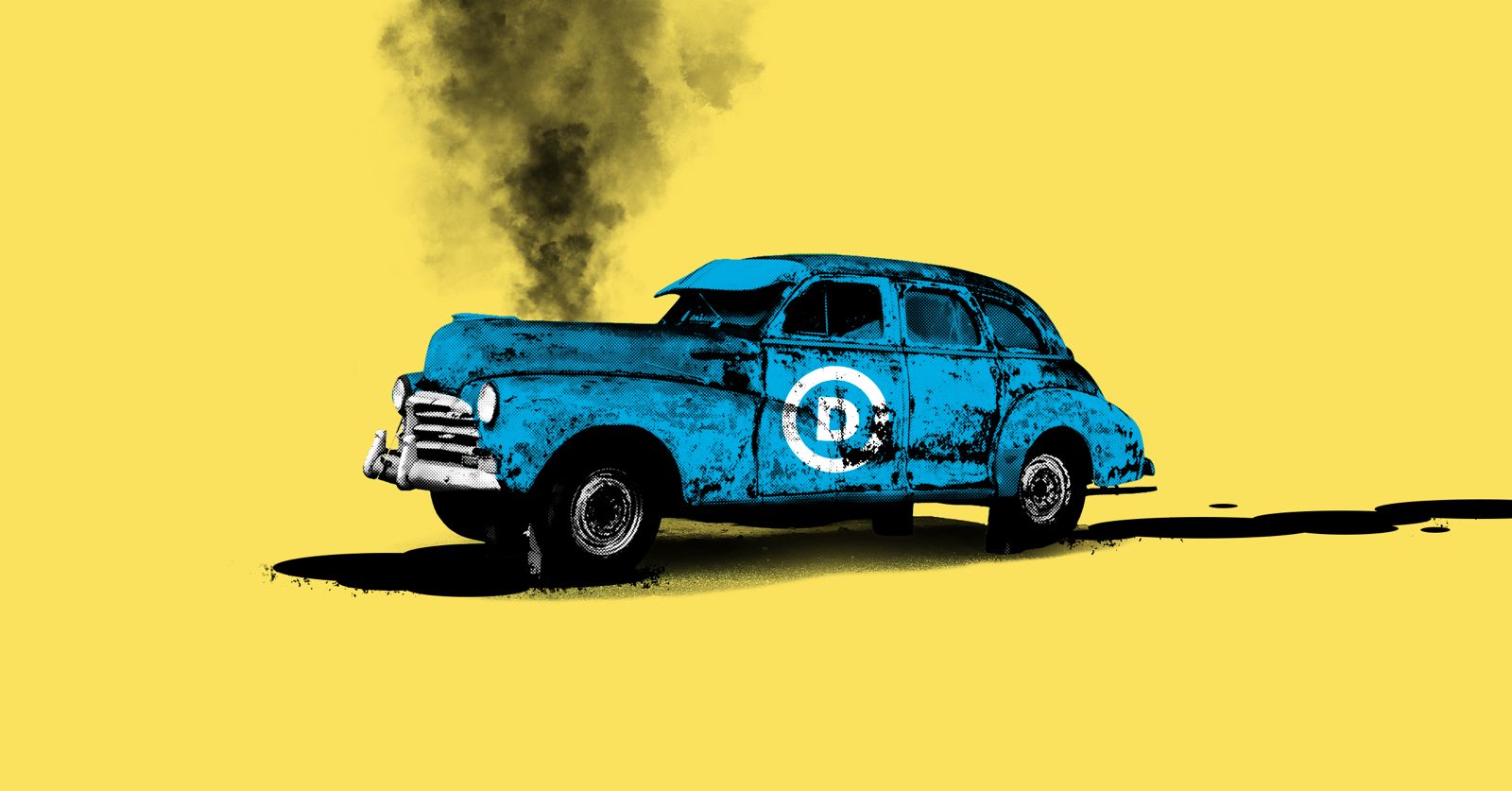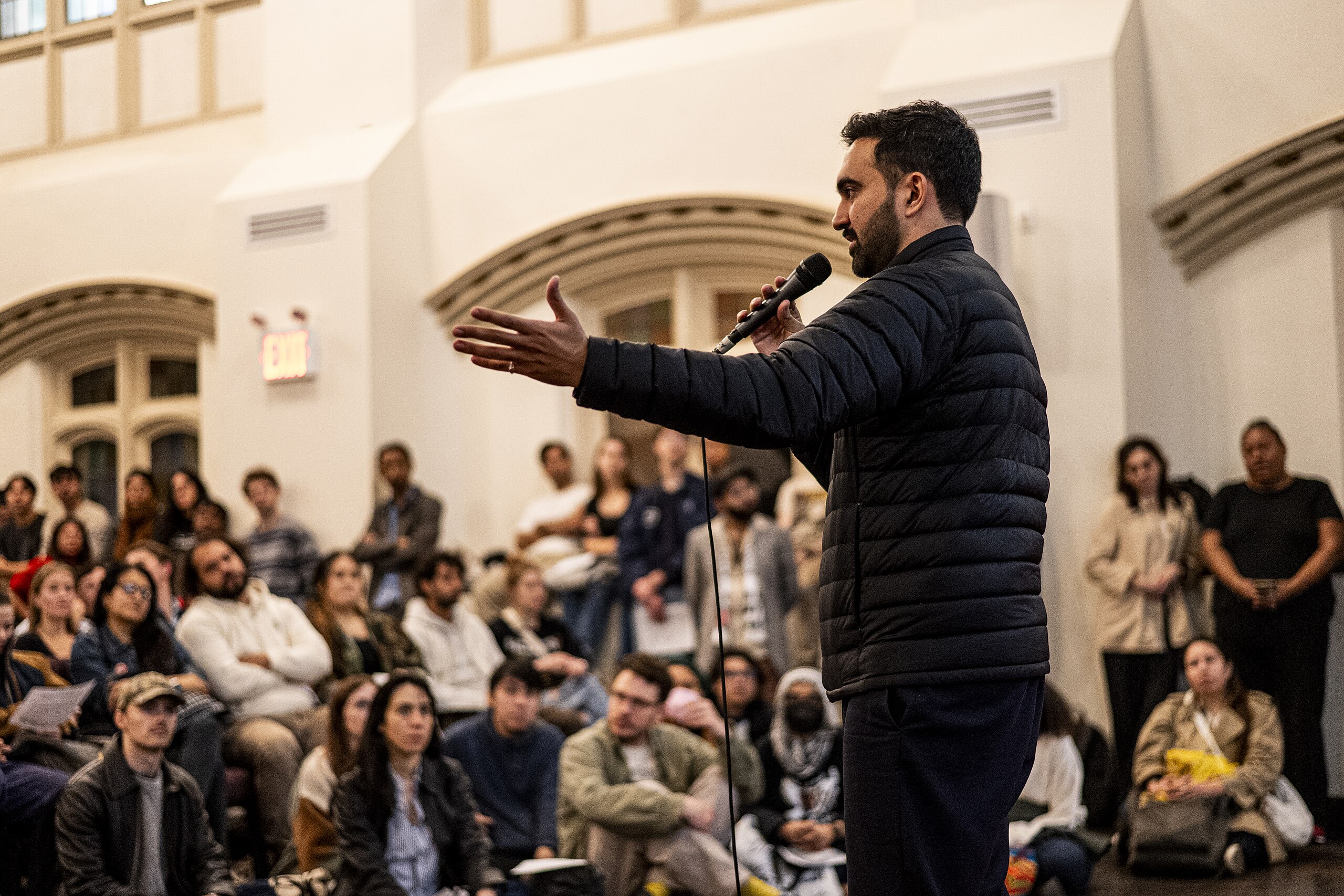It’s too soon to take a tally of the full extent of the defeat yesterday. Donald Trump seems to have won the popular vote, the first Republican in twenty years to do so — and potentially to have swept all seven of the battleground states. His margins of victory weren’t crushing, a small but important reminder that the right does not have a real social majority yet. But the election wasn’t exactly close either. To add to the scale of Trump’s victory, Republicans have gained at least three seats in the Senate to take the majority, which will also make a Democratic comeback in the next six years in a body already stacked against them much more difficult.
The results are, in short, a disaster: for the planet, for immigrant communities, for women, for labor and the left, for people all over the world. The world’s worst people — its strongmen and the billionaire class — are having the day of their lives. Behind Trump stands Elon Musk and a coterie of right-wingers who intend to be the architects of a new, illiberal era to succeed the last 50 years of neoliberal capitalism. There’s no reason to think they won’t set to work immediately. In neighborhoods across the country, right-wingers will feel empowered to use force against their enemies. It’s the start of a dark new chapter.
How?
For most of us, the first question is the same as in 2016: how did this happen? My first draft of an answer is as follows.
For decades, the right — especially through a media operation that is sophisticated, well resourced, and massive in scale — has successfully constructed a base numbering in the tens of millions of ideologically-committed reactionaries. If I had to put a number on it I’d estimate it’s a base of about a third of the country. That seemed to be the floor below which Trump’s approval rating hasn’t sunk since 2016. It’s among this layer that racism, sexism, Islamophobia, xenophobia, paranoid conspiracy theories, and even anti-Semitism (despite protests to the contrary by conservatism’s respectable faces) run rampant. To paint with a very broad brush: this is a base that’s overly white, male, and located in the country’s exurban parts. Among these are many of the Republicans’ core supporters for decades. And it’s not a particularly working-class base either — the studies I’ve seen suggest its ranks are populated by car salesmen, auto dealership owners, independent contractors, low-level managers, exurban professionals, shopowners, and the like.
But to win Trump had to expand beyond this third of the country, and conditions were ripe for just such a successful push. For many liberals and those on the left who insist that the last four years have been an economic success story, this is hard to grasp. I’ve been encouraging people who think the Biden economy was great to read Thomas Ferguson and Servaas Storm’s report from earlier this year, “Trump versus Biden: The Macroeconomics of the Second Coming” (the “second coming” turned out to be a very apt title). As they show, the economic story has been less than brilliant for most people, and real wage gains made under Trump’s administration outstripped wage growth under Biden. That’s not due to Trump’s policies, but most people don’t see it that way.
Combine shitty jobs with the worst bout of inflation in decades. As Adam Tooze has pointed out, when one focuses on the prices for goods that regular people spend much of their income on — food and energy — the price shock in 2022 was worse than anything we’ve seen since 1980. Whether the Biden administration could have done much in response is a debate. But the administration never seemed to treat the crisis as a crisis. Even if you consider the Inflation Reduction Act a major response, one year after its passage, seven in ten Americans had heard little or nothing about it. Compare that to the number of people who know about Trump’s wall, or the mask mandates under Covid, or Medicare for All, or the Green New Deal. It’s not impossible to popularize a policy — parties do it all the time. (The trouble with the IRA, even if the Democrats had made the effort to really sell it, is that as a program focused primarily on deficit reduction and tax cuts to juice private investment years down the line, it left many who did know about it feeling uninspired.)
When you look at public opinion about the economy, you really get a full sense of the depth of anger people are feeling. I fear that both the left and the Democrats have been living in our own silo-ed media bubbles and never really appreciated the extent of this. In presidential elections in the last 32 years, Americans’ feelings about the economy have been at appallingly low levels three times: 1992, 2008, and 2024. In each election, the incumbent’s party was thrown out in a crushing defeat. In the last two years, instead of “I feel your pain,” voters got scorn from liberal commentators and economists: Americans were not experiencing hard times, they were just suffering under an irrational “vibecession.”
Who Did It?
Did the Harris campaign make the most of the bad hand they were dealt? No.
The campaign lost a lot more ground with the Democrats’ traditional base among workers of color. Exit polls suggest, for example, that Harris won about 52 percent of the Hispanic vote, compared to around 65 percent for Biden in 2020 and 71 percent for Hillary Clinton in 2016. In 2020, Biden won 55 percent of voters earning less than $50,000 and 57 percent of voters earning between $50–100,000. Harris’s figures? 47 percent and 46 percent respectively. She did flip Biden’s numbers among those earning more than $100,000: Biden got 42 percent, Harris took in 51 percent. Since 2017, there’s been a lot of talk about class dealignment, the process in which both parties lose their traditional class bases and politics is no longer organized around different social classes. It seems now it’s time to start talking about class realignment — and not of the kind the left has long hoped for.
The Harris campaign’s strategy to win over disaffected Republicans also came up short. And Harris and her party’s adamant defense of Israel’s genocidal campaign cost them enthusiasm and votes among a small but significant number, especially among young people and Muslim voters.
But I don’t think this was fundamentally a failure of the campaign and messaging. As I’ve written about recently elsewhere, both parties’ embrace and defense of the neoliberal model in the last fifty years primed the country for a backlash against mainstream politics. When Trump decapitated the Republican Party in 2016 and put himself in charge as the champion of an illiberal end to the neoliberal period, the ball moved to the Democratic court. Democratic leaders worked furiously and with atypical gusto and effectiveness to make sure that their response would not be Bernie Sanders. Instead, the Democrats’ response was to welcome the evicted Republican leadership into their party’s camp. Together, they made common cause to defend the old order against the ugly new one on offer. Last night — which was the rotten fruit of that strategy — hopefully demonstrates just how bankrupt that approach was. But it certainly loaded the dice against Harris, and it would have made it much more difficult for her to position herself as a credible economic populist had she even wanted to.
But last night was also, critically, a consequence of Biden’s and the Democrats’ failure to meaningfully improve the lives of millions of people. That was the key defeat. Harris’s failed campaign was downstream of that.
This thread from Stephen Semler captures the depth of that failure, and even points to a date — early 2022 — when the Biden team pivoted away from redistribution to deficit reduction and national security. The Biden team’s focus and agenda, possibly from the start but absolutely by 2022, had shifted to projecting US geopolitical power and winning a cold war with China. (And it’s this focus on making chess moves in an inter-imperial conflict that must partially explain the administration’s heinous Israel policy.) There were still notes of redistributive intent throughout the term, but those were increasingly in the service of uniting the country to face the alleged external threat.
Like Democratic administrations before it, the Biden team 1) raised people’s expectations, 2) failed, and then — rather than admitting they were beat in 2022 and pivoting to a campaign to change Congress (including campaigning against their own party’s conservatives who allegedly had sabotaged the meat of Bidenomics) — they 3) just shifted their priorities. I think there’s a reason for all this, which came into focus as early as June 2021. There was at least one key point on which the Biden administration did not depart at all from past Democratic administrations: seeking permission from the corporate class to act. Without their go-ahead, Biden’s plans to “build back better” died a sad and quiet death.
What Now?
All this matters for the left and unions because we have to be honest about what’s going on and the opportunities and obstacles going forward. I’m not sure what comes next. Anyone who has a game plan the day after a major defeat is not taking the task seriously. But a few observations, questions, and short-term next steps do come to mind.
We need a change of political strategy for labor and the left. This isn’t a “Bernie would have won” moment, where we can come out of it feeling reassured about our own strategic commitments. Yesterday was a massive repudiation of the Democrats. But if we’re being honest with ourselves it was not a repudiation of the left because there was simply no independent left on the ballot nationally to repudiate or approve. The left-wing bench in Congress is smaller coming out of four years under the Biden administration than it was going in. The last four years were a big setback not just for Democrats but for the left too. We can’t pretend that’s not the case. A grand total of at best 650,000 people out of an electorate of about 160 million voted for Bernie Sanders, Rashida Tlaib, and Alexandria Ocasio-Cortez — that’s less than one percent of the electorate. The fact that the left had next to no national presence in this general election is our failure, and it’s a big one.
Fundamental things must be reassessed now if this sorry situation is going to change for the better.
First, it’s been said many times before but has to continue being said: this starts with breaking off our disastrous, self-limiting, and ultimately self-defeating alliance of convenience with the Democrats, in which we play junior partners to a leadership that hates us. This alliance is the worst of both worlds. The left’s connection to a party that wants to occupy the center-right terrain continues to demoralize and confuse our base. And our connection to Democrats — and our priorities (socialized healthcare, a welcoming policy towards immigrants, soaking upper-income earners with new taxes) — continues to make it more difficult for Democrats to make inroads into the Republican camp. Taking down Trumpism definitively almost certainly requires both moves: energizing new and younger voters with a deep hostility to Democrats and cutting into the Trump base. The problem is that the same party can’t mobilize the left and the excluded and organize the center right and the affluent simultaneously.
If ever there was a time to get serious about a break from the Democratic Party, it’s at a moment when the party has failed in its most basic task to hold back the right, when it continues to aid and abet a genocide, and when our continued association with them makes it harder for both us and them to build the bases needed to beat Trumpism.
Second, the left has to break out of our demographic silo. A base among urban, college-educated left-wingers is a fine starting place. We’re not the first left-wing movement to start with such a base. But there will be no real left-wing alternative to Trumpism and the Democratic Party until we’re on our way to building a base that goes beyond that.
Both of those shifts are Herculean tasks and again anyone who claims that they have a simple answer today for pulling them off is lying to themselves. We have to acknowledge the depth of these challenges first, and not fall back on worn-out slogans or just “owning the libs.”
In 2016, we had a left that was totally new and with no experience, but it had an enormous degree of energy and momentum. The situation is reversed in 2024. But there are opportunities and reasons for hope that that momentum can be regained, most importantly through labor’s ongoing democratic renewal and other moves like a big and bold mayoral campaign by Zohran Mamdani and NYC-DSA next year.
I’m not despondent. I’m deeply concerned about what Trump will do and what happens next. But I can’t see how his agenda can really deliver for the millions who aren’t ideologically committed to the right but who voted for him. In that sense his position is not really any better than Biden’s was going into 2021. Across-the-board tariffs and mass deportations, if they happen, will be an economic disaster.
Whatever they do is outside our control. What we can control is our next steps. A catastrophe like this can be a pivot point to move in a new, better, and ultimately much more fruitful direction. We owe it to ourselves, people around the world, and the planet to try our best to make this such a pivot point.




